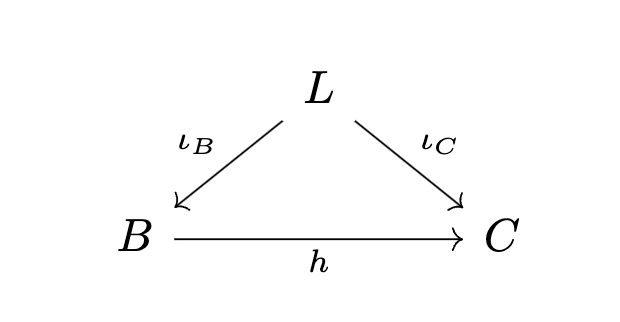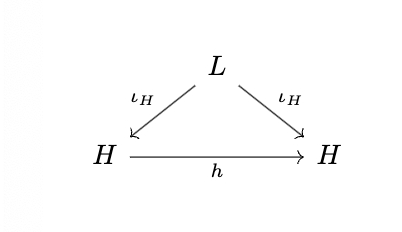
We already talk about lots of Galois Connections
Math Essays: Galois Connection in various branches (marco-yuze-zheng.blogspot.com)
Math Essays: An example of Galois Connection in module theory (marco-yuze-zheng.blogspot.com)
However, we have not talk about the initial one! The Galois Connection in algebraic Galois theory!
In this essay, we will deal with the Galois Connection between subsetes of
The coslice category of field extension and Galois GroupGalois Connection in Algebraic Galois theory Galois Connection, redefined.Closure operator and Galois ConnectionFrom Galois connection to Closure and Interior operator.From Closure operator to Galois Connection.Basic result of Galois ConnectionAnother example of Galois Connection.Appendix: Using Galois connection to prove Hilbert's Nullstellensatz
The coslice category of field extension and Galois Group
In category of field, the morphism is field extension since the only proper ideal of a field is
Hence if we have a field

Here the object is
In particular, we are interested in the automorphism of a field extension from

Definition. The Galois Group of a field extension is defined as
This essay will consider the relation between the subset of
Definition. Let
Obviously
Similarly, For a intermediate field
Easy to see that
Galois Connection in Algebraic Galois theory
Lemma. If
Proof. By definition,
Lemma.
Proof. By definition,
Since
Proposition. Galois Connection between subset of
Proof.
Corollary.
By the property of Galois Connecton, if
See Math Essays: Galois Connection in various branches (marco-yuze-zheng.blogspot.com)
There exists a poset isomorphism
Since
Hence if
Hence there exists a isomorphism between the set of
Galois Connection, redefined.
Proposition. Let
Then
Proof.
Assume that
then
Similarly,
Another direction was already proved in Math Essays: Galois Connection in various branches (marco-yuze-zheng.blogspot.com).
Closure operator and Galois Connection
Let
By duality, we could define a interior operator as
Let
Let
Then for
Similarly, you can use this way to get an interior operator.
From Galois connection to Closure and Interior operator.
As you can see, for a pair of Galois connection
Hence
From Closure operator to Galois Connection.
Proposition. Let
Then
Proof.
Similarly, we have
Basic result of Galois Connection
Proposition.
If there exist a pair of Galois Connection
Proof.
The idea is consider
Take any
Similarly we have
Proposition.
If
Proof.
By definition of Galois connection, we have
Hence we have
Therefore,
Similarly,
To see
Therefore,
Another example of Galois Connection.
Let
For any
Notice that
Proposition.
Appendix: Using Galois connection to prove Hilbert's Nullstellensatz
Definition.
Fix a natural number
Let
Let
Proposition. Galois Connection between subsets of
Proof.
Assume
Suppose that
Recall that for a pair of Galois Connection
Since
Observe that
Corollary. Hilbert's Nullstellensatz
There exists a order reversed isomorphism between the poset of variety and radical ideal.



No comments:
Post a Comment